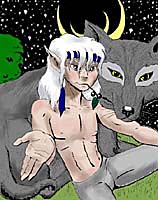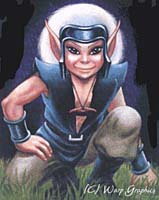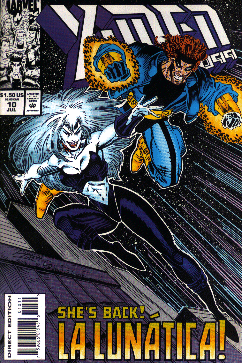
This trend contributes to the difficulty people with albinism face in fitting into society, for it compounds the tendency of others to regard them as freaks of nature or objects of morbid curiosity.
A pale appearance is often believed to indicate sickliness and death. Many times, people with albinism are mistakenly thought to be inflicted with a life-threatening disease (when in fact they lead lives as full as anyone else's), and are occasionally even associated with ghosts and vampires. Lady Death, a white-skinned and white-haired avenger from the Law and Chaos series, is perhaps one of the most perverse and sadistic female characters in comics. While serving as an agent of mass destruction, she relishes her gruesome acts and their aftermath, frequently shown immersing herself in a bath of blood or wallowing through heaps of skulls and bones.
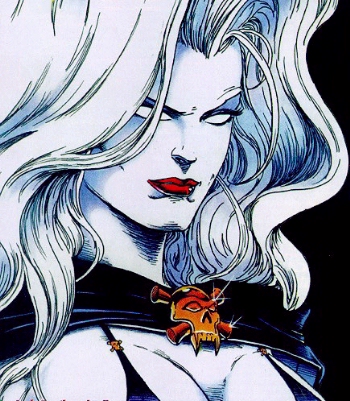
A refreshing departure from the negative typecasting of white-haired and pale-complexioned characters is found in the form of Skywise, a principal player in Wendy and Richard Pini's popular ElfQuest comic series. Several different artists contribute to the comic, each of whom interprets Skywise's looks slightly differently, but his pure white hair appears consistently throughout. Also, his skin is almost always relatively fair, as pictured in the illustration, "The Invitation" by Catpaws (above, left) or somewhat ruddy or rosy, as in the illustration, "Recognition" by Wendy Pini (above, right). Fairlight, one of the artists for the series, says that Skywise "plays the role...of the hero's advisor and confidante, and is a romantic, clever, witty personality, a lover and a stargazer." Like most elves of traditional fantasy lore, Skywise is considered attractive and charismatic.
"Children of the Moon" | Sea Dwellers | Miscellaneous
HOME | Introduction |
Art | Fiction | Film |
|
 La Lunatica, a "mutant"
from the X-Men 2099 series, is depicted with the exaggerated,
stereotypical physical traits used to characterize people with albinism.
In addition, she thrives on the pain of others and is initially an enemy
of the protagonists. Even her name implies psychological disturbance.
Although in the end she becomes one of the "good guys," she is undoubtedly
designed to stand out as a particularly aberrant character.
La Lunatica, a "mutant"
from the X-Men 2099 series, is depicted with the exaggerated,
stereotypical physical traits used to characterize people with albinism.
In addition, she thrives on the pain of others and is initially an enemy
of the protagonists. Even her name implies psychological disturbance.
Although in the end she becomes one of the "good guys," she is undoubtedly
designed to stand out as a particularly aberrant character.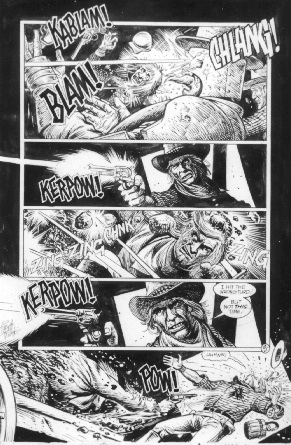 Blatant defamation of
people with albinism is manifested in the comic series, Jonah Hex: Riders
of the Worm and Such, in which two villainous, nocturnal, half-worm,
half-human characters named Johnny and Edgar Autumn engage in sexual depravity,
murder, cowardice, and self-proclaimed stupidity. They are actually
based on Johnny and Edgar Winter, two blues-rock musicians with albinism
who are brothers. In addition to their white hair and white skin, the
Autumn brothers exhibit eye positions that typically result from visual
complications associated with albinism, and wear dark glasses, which many
people with albinism use to protect their light-sensitive eyes from the
sun.
Blatant defamation of
people with albinism is manifested in the comic series, Jonah Hex: Riders
of the Worm and Such, in which two villainous, nocturnal, half-worm,
half-human characters named Johnny and Edgar Autumn engage in sexual depravity,
murder, cowardice, and self-proclaimed stupidity. They are actually
based on Johnny and Edgar Winter, two blues-rock musicians with albinism
who are brothers. In addition to their white hair and white skin, the
Autumn brothers exhibit eye positions that typically result from visual
complications associated with albinism, and wear dark glasses, which many
people with albinism use to protect their light-sensitive eyes from the
sun.
